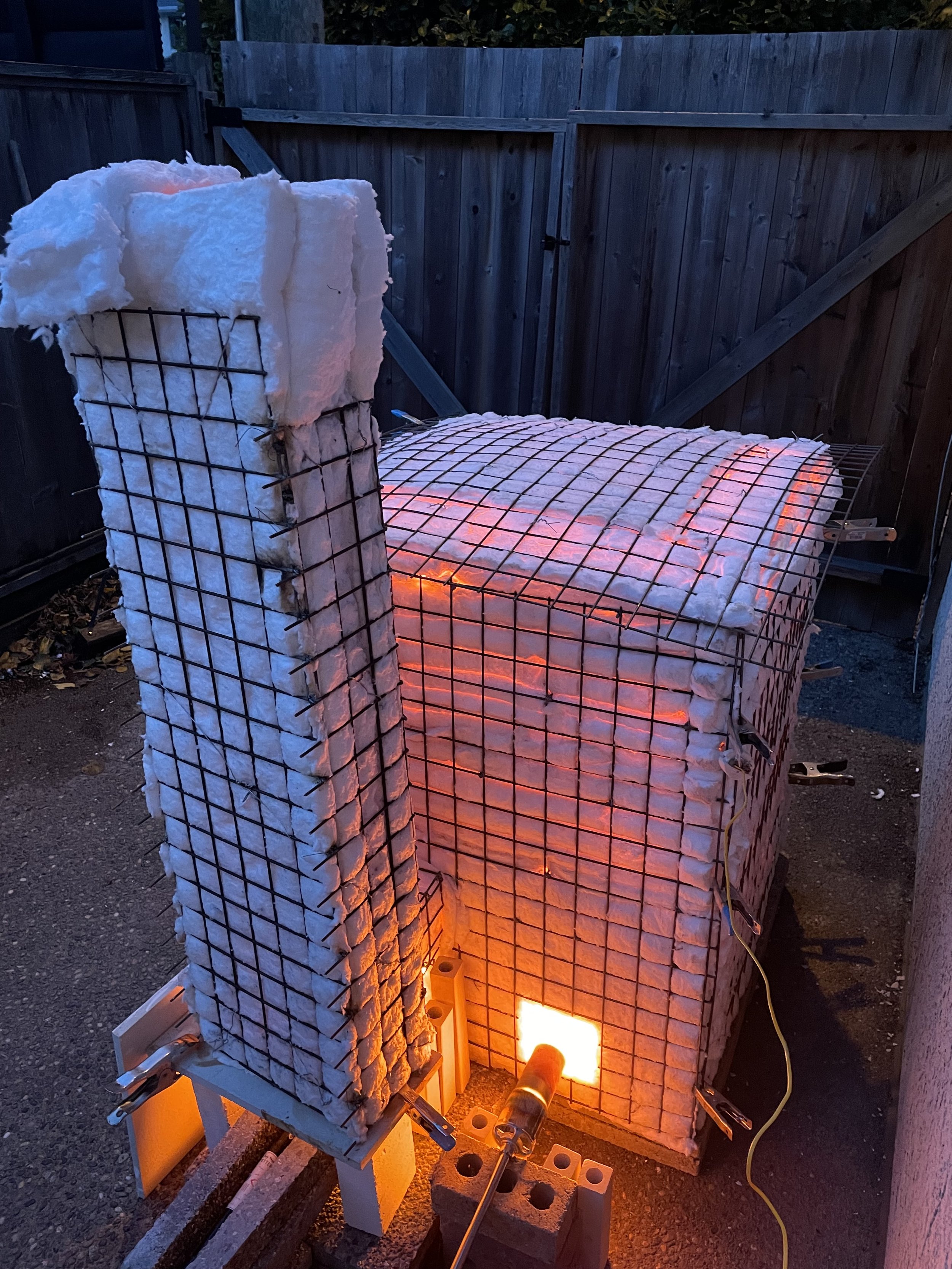Commercial Kilns are Expensive
One of the most significant challenges for independent potters lies in their firing methods. Traditional brick wood-fired kilns require substantial investments in materials, ample space, and extended firing times. Electric kilns, while an option, also come with substantial costs, both upfront and in ongoing maintenance, and they lack the versatility to achieve reduction atmospheres.
When I set out to establish my own pottery studio, I was determined to have a reduction kiln. However, the cost and space constraints made a brick wood-fired kiln impractical, particularly in an urban environment.
My solution: build my own kiln out of ceramic fibre insulation for a fraction of the cost
Kiln-1
A simple flat-pack kiln, consisting of 6 panels, clamped together with a firebox by the entry flue. Functionally suitable for raku and bisque temps.
Kiln-2
I acquired a 30-year-old Skutt electric kiln at no cost from a studio where I previously worked. The kiln was showing its age – the elements had become brittle, and the firebricks were chipped in various places, it was no longer a reliable electric kiln. The cost of refurbishing it into a dependable electric kiln was not worth it. So, I decided to repurpose it into a down-draft gas kiln.
The transformation involved a complete overhaul, with the removal of all electronics, cutting an entry flue into the bottom, and constructing a chimney that extended both inside and through the kiln's lid. While it offered less space compared to Kiln-1, this conversion allowed it to reach higher temperatures, up-to Cone 6. The durable hard brick structure proved resilient in handling smoke from ember beds, I utilize for top-temp reduction.
Kiln-1.1
After using Kiln-2 for a few firings, I realized it wasn't quite what I needed. It struggled at higher temperatures, had limited space, and had to stay permanently in my backyard, unlike the flat-pack kilns that I could disassemble and store. So, I decided to revamp Kiln-1, turning it into a downdraft kiln that could reach temperatures around Cone 8.
I added a tall chimney that attaches from the outside and put in an extra 2 inches of insulation to handle the higher temperatures. This kiln still needs a few tweaks to be perfect, but so far, I've fired it over 10 times and can consistently produce Cone 7 reduction pieces.
Kiln-1.2
Kiln 1.2 stands as a testament to continuous improvement. The welded panels lend a sturdier frame and welded prong fortify the ceramic fiber, reducing the risk of detachment. Embracing expansion, I enlarged the kiln, employing two torches to enhance production capacity. While currently utilized for cone 6 reduction firings, I am confident in its capability to achieve cone 10.
The upgrade wasn’t expensive, with the majority of materials recycled from Kiln 1.1.



